Are you feeling antsy to fill in your landscape—fast? Do you want to block the neighbors’ view of your house while you’re actually still living in it? Or have a beautiful shade tree in your yard that won’t take 20 years to form a canopy? A fast-growing tree is the answer.
Some trees take decades or more to mature, while fast-growing trees grow at a considerable pace, sometimes as much as 10 feet in a single year! In fact, one of the fastest-growing trees in the world is the empress splendor (Paulownia fortunei and P. elongata), a hardwood species that can grow 10 to 20 feet in its first year.
You know the old saying—”The best time to plant a tree is yesterday”?
Related: Why it’s better to plant trees in fall (here’s how)
That’s because the most popular fast-growing trees have environmental benefits as well as economic value. They add near-instant curb appeal, bring soul and structure to your property, improve air quality, reduce energy usage when planted as shade trees, and provide food and habitat for a number of wildlife species.
They also fix the common problem of privacy when your house is backed up against three or four other homes and the fence isn’t as high as you’d like. Trees are cheaper than fencing, that’s for sure!
So I’ve rounded up my favorite fast-growing trees for virtually every scenario, giving you size and beauty without the wait. (Some of these I even grow in my own yard!)
Disclosure: If you shop from my article or make a purchase through one of my links, I may receive commissions on some of the products I recommend.
Best fast-growing privacy tree
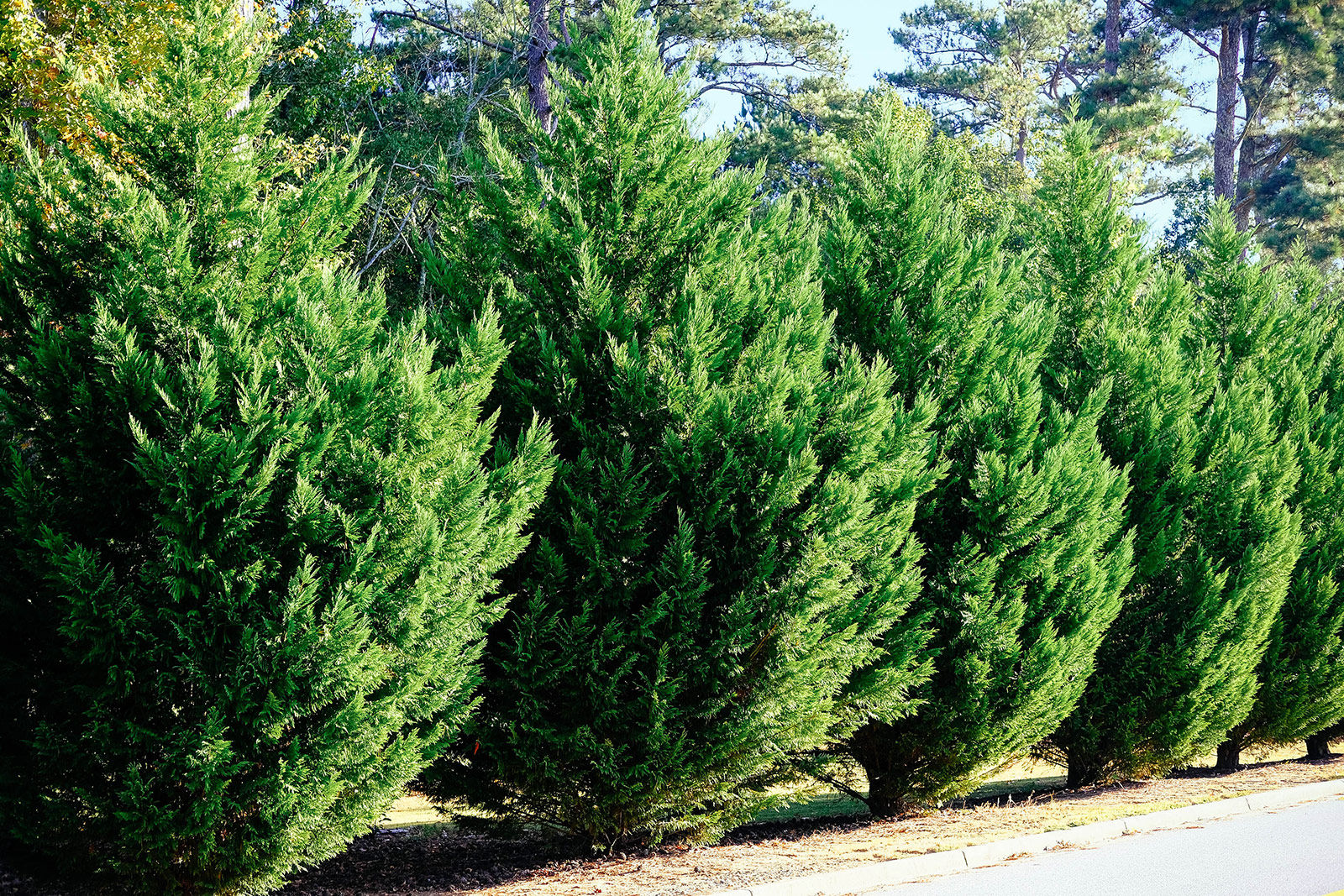
The Leyland cypress (Cupressus) is America’s most-planted privacy tree for a reason: It grows fast (up to 5 feet per year) and has an iconic columnar silhouette that makes it ideal as a dense, living wall when planted 8 feet apart. The feathered foliage is soft to the touch and the tree stays green year-round, so you won’t lose any privacy in winter.
Leyland cypress trees are also drought-tolerant once established and adapt to a wide variety of soils, from sandy to clay. You can let them grow to their full mature height or prune them into a lower-growing hedge. Even without pruning, however, these trees maintain their uniform, symmetrical shape that gives Leyland cypress trees their reputation for being excellent privacy screens.
- Hardiness zone: 6 to 10
- Sun exposure: Full sun
- Growth per year: 3 to 5 feet
- Mature height: 40 to 60 feet
- Shop Leyland cypress trees
Just for Garden Betty readers
You can find all of these trees at FastGrowingTrees. New customers can use code GARDENBETTY10 for 10% off their purchase of $75+! Offer is valid through May 30, 2024.
Best fast-growing privacy tree for small yards
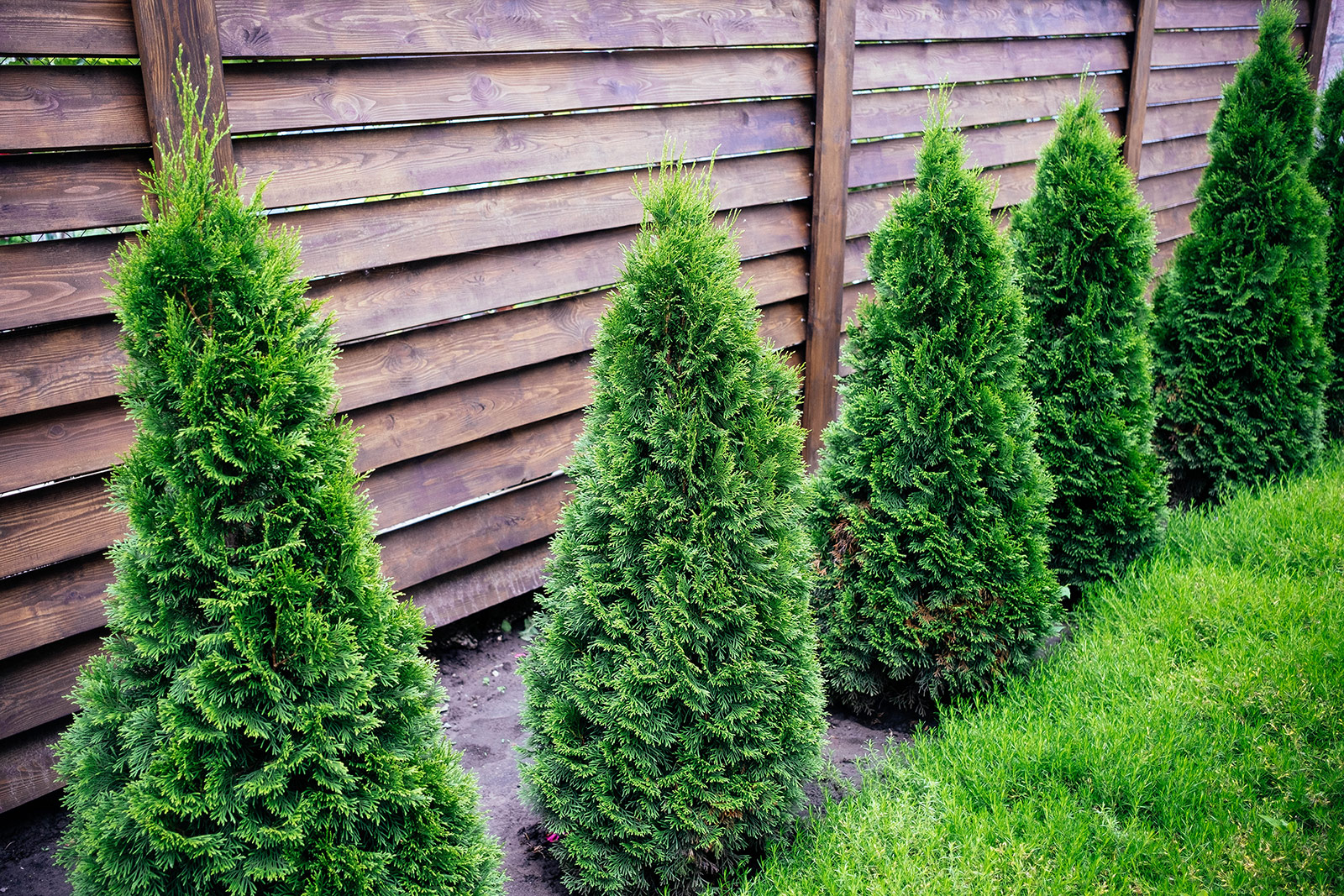
For smaller yards where a row of Leyland cypresses might feel overwhelming, consider this arborvitae (Thuja occidentalis ‘American Pillar’) as a privacy screen. Also known as a Thuja, the fast-growing, low-maintenance evergreen tree has a narrower profile without losing its dense growth habit, so it’s perfect for tighter spaces where you want height as a buffer for your house or second-story windows, but don’t want your trees to spread so much.
Ideal for border plantings, arborvitae is resistant to extreme heat, cold, wind, ice, and deer, and needs little water to thrive. Once the roots are established after six months, rainwater should be enough to keep this tree happy.
- Hardiness zone: 3 to 8
- Sun exposure: Full sun
- Growth per year: Up to 3 feet
- Mature height: 25 to 30 feet
- Shop American Pillar arborvitae trees
Best fast-growing evergreen tree
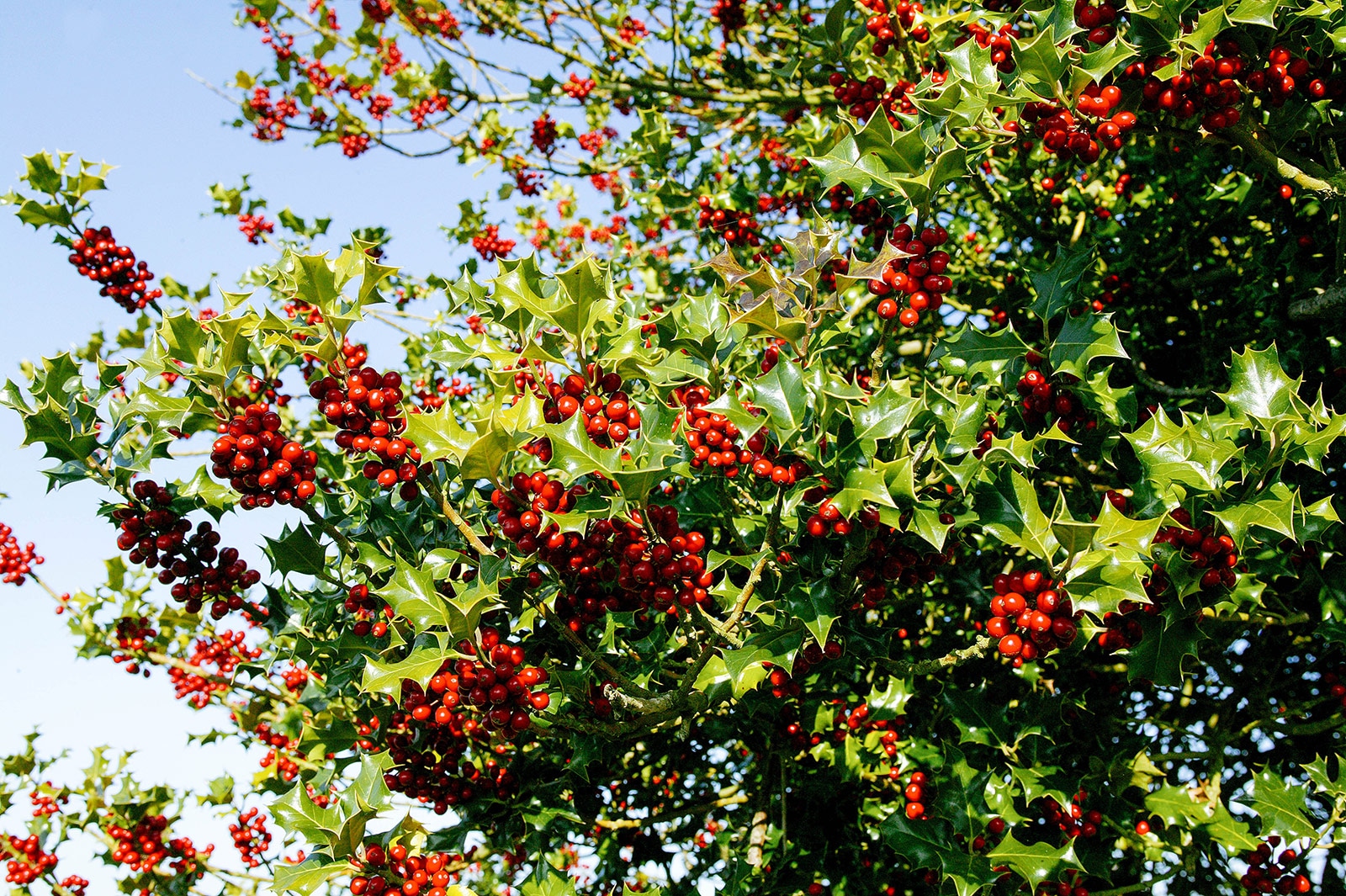
While I could’ve picked a conifer as the best fast-growing evergreen, I decided to go with an Oakland holly tree (Ilex ‘Magland’) because it’s a cone-shaped evergreen tree that doesn’t have needles, which makes it more interesting in my book. (If you’re looking for an evergreen conifer, however, keep reading to find out what I recommend.)
Oakland holly trees are unique in that the leaves resemble oak leaves, and each tree has both male and female flowers, so no pollinator is needed to produce beautiful, berry-laden boughs. (Don’t eat the berries though!)
The tree’s dense, shiny, emerald green foliage makes it ideal as a stately front-yard tree or as a privacy screen when grown close together. Unlike the privacy tree I mentioned above (arborvitae, which is practically a deer buffet), holly trees have the bonus of not being very palatable to deer.
- Hardiness zone: 6 to 9
- Sun exposure: Full to partial sun
- Growth per year: 1 to 2 feet
- Mature height: 12 to 20 feet
- Shop Oakland holly trees
Best fast-growing evergreen tree for cold climates
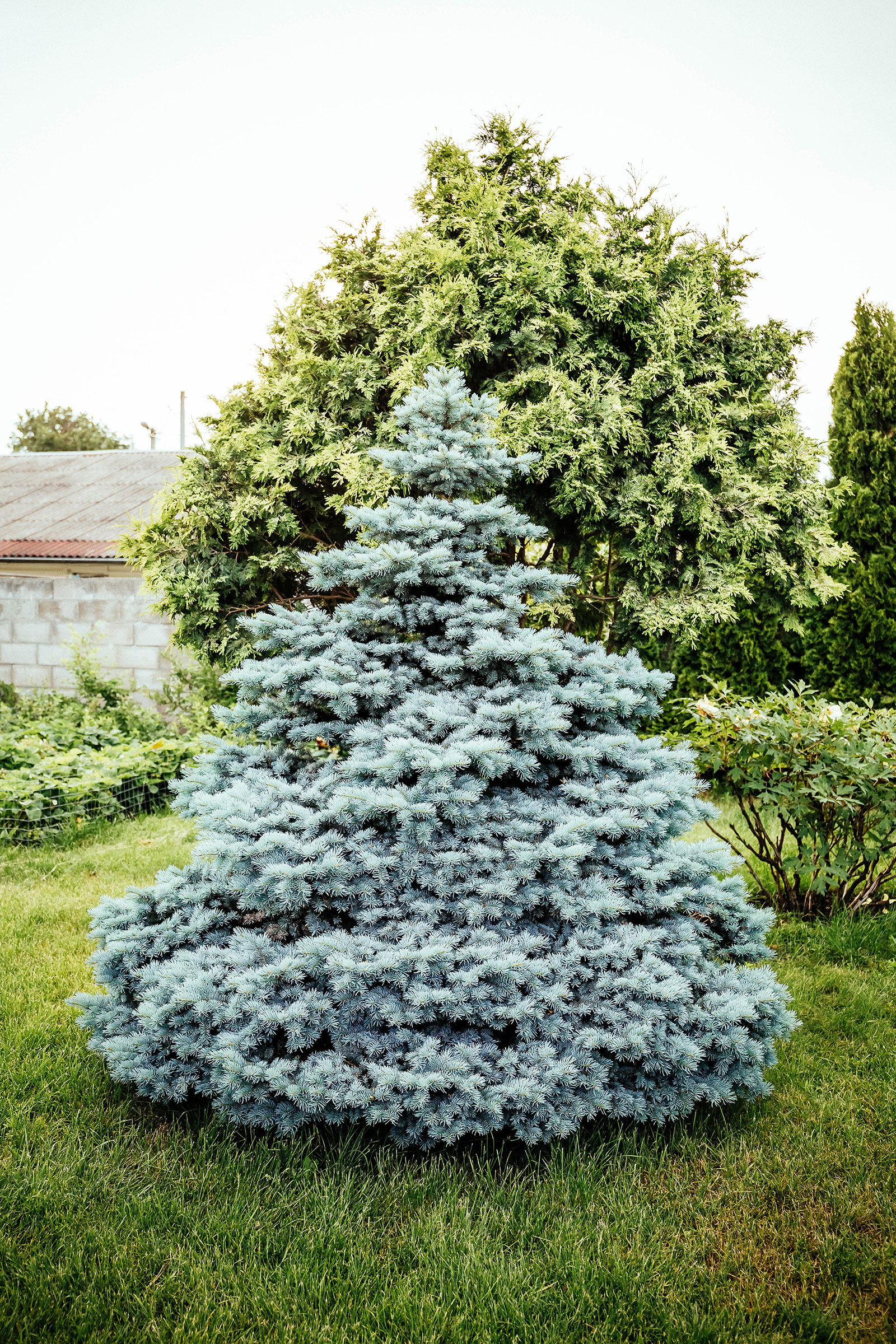
For bitterly cold climates down to zone 2 (around -40°F), Colorado blue spruce (Picea pungens) is my pick for an extremely cold-hardy evergreen that’s also sleek and beautiful. Colorado blue spruce is one of my favorite evergreens because 95 percent of its needles are blue, which provide a stunning contrast against a typically green landscape. The needles are stiff like bottle brushes, and the trees have an elegant, wide columnar shape that make an excellent windbreak or privacy hedge if planted in a long row.
I actually have a few of these in my own yard: two that were planted here before me and have grown to about 40 feet, and a new one that used to live in a pot as a living Christmas tree and is currently 4 feet tall. This is the kind of tree that’ll live for hundreds of years in a variety of soils, so be sure you plant it in a permanent spot that’s not too close to the house!
- Hardiness zone: 2 to 7
- Sun exposure: Full to partial sun
- Growth per year: 1 to 2 feet
- Mature height: 100 feet or more
- Shop Colorado blue spruce trees
Best fast-growing shade tree
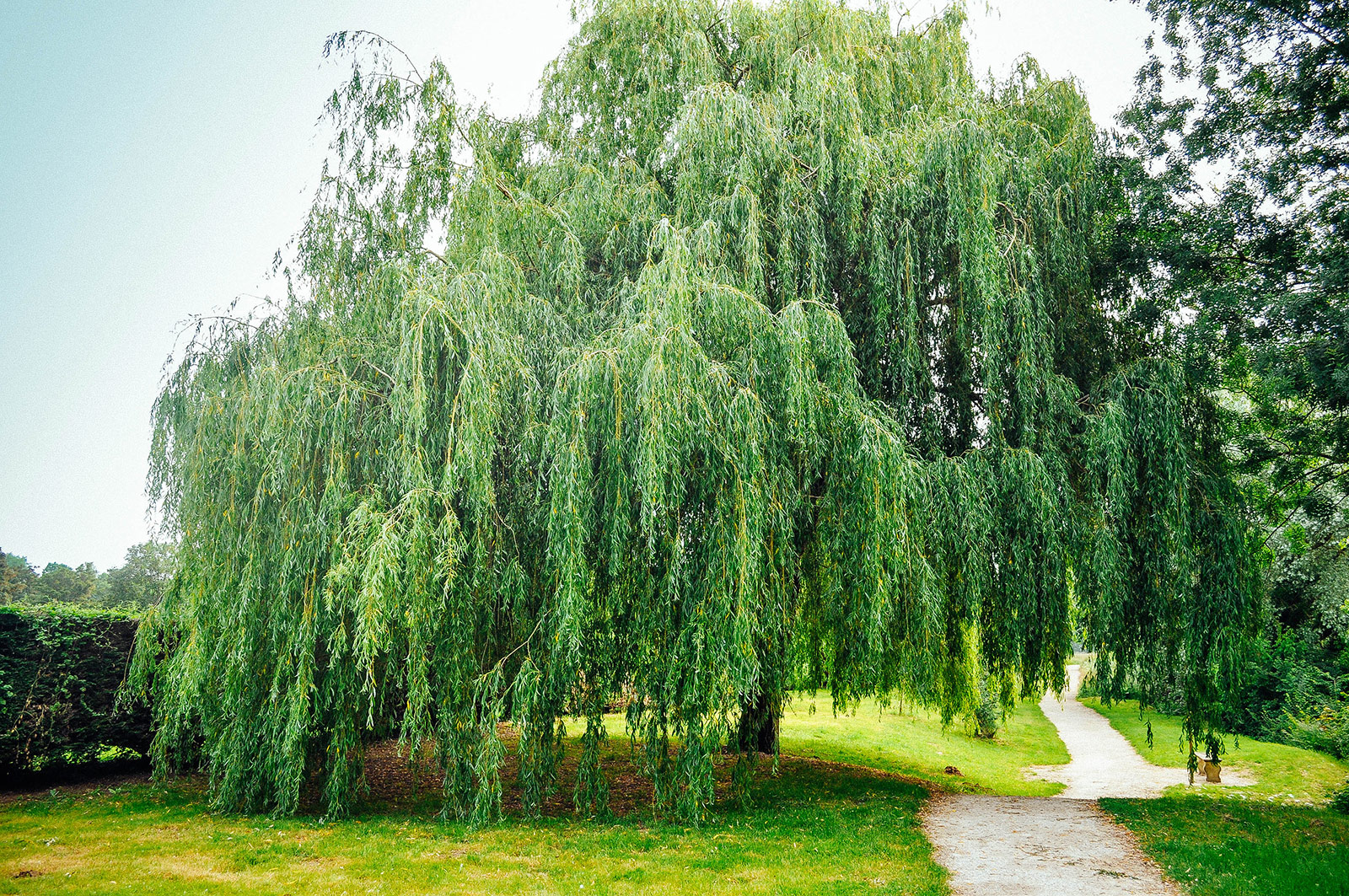
If you want a big, romantic tree to sit under on a hot summer day with a picnic or a book in hand, it’s hard to go wrong with the secluded shade of a weeping willow (Salix babylonica). This dramatic tree is beloved for its falling canopy of low, sweeping branches and classic, graceful look. It starts out thin, with only a few branches that grow upright; but once it reaches a height of around 10 feet, it forms more and more branches that arch outward, creating the wide, weeping canopy that the tree is known for.
Although weeping willows are often found near rivers, lakes, and ponds (making them ideal for planting in wet, soggy areas), these trees are highly adaptable to different soils and growing conditions, even tolerating drought to a certain extent.
- Hardiness zone: 4 to 9
- Sun exposure: Full to partial sun
- Growth per year: 4 to 8 feet
- Mature height: 30 to 50 feet
- Shop weeping willow trees
Best fast-growing tree for fall color

If you want a stunning display of brilliant red fall color that’ll turn heads in the neighborhood, look no further than this Autumn Blaze red maple (Acer x freemanii ‘Jeffersred’). Also known as a Freeman maple, the low-maintenance hybrid perfectly encapsulates the best characteristics of red maple (Acer rubrum) and silver maple (Acer saccharinum): amazing color, dense branching, and fast growth. It’s an ideal tree to plant by the house for shade (and energy savings) as well as by the road for curb appeal (as it isn’t bothered by car exhaust).
One word of caution, however: The fallen leaves of certain red-leaf maple species (including A. rubrum and A. saccharinum) are known to be toxic to horses if they ingest the wilted or dried leaves. Fresh leaves are not a problem, and you can read more about that here.
The Autumn Blaze red maple adapts to a wide range of growing conditions and is resistant to insects, diseases, and deer. The tree is also cold-hardy down to zone 3 and has minimal upkeep once its leaves drop in fall. Just plant it and forget it!
- Hardiness zone: 3 to 8
- Sun exposure: Full sun
- Growth per year: 3 to 5 feet
- Height: 40 to 50 feet
- Shop Autumn Blaze red maple trees
Best fast-growing tree for fragrance
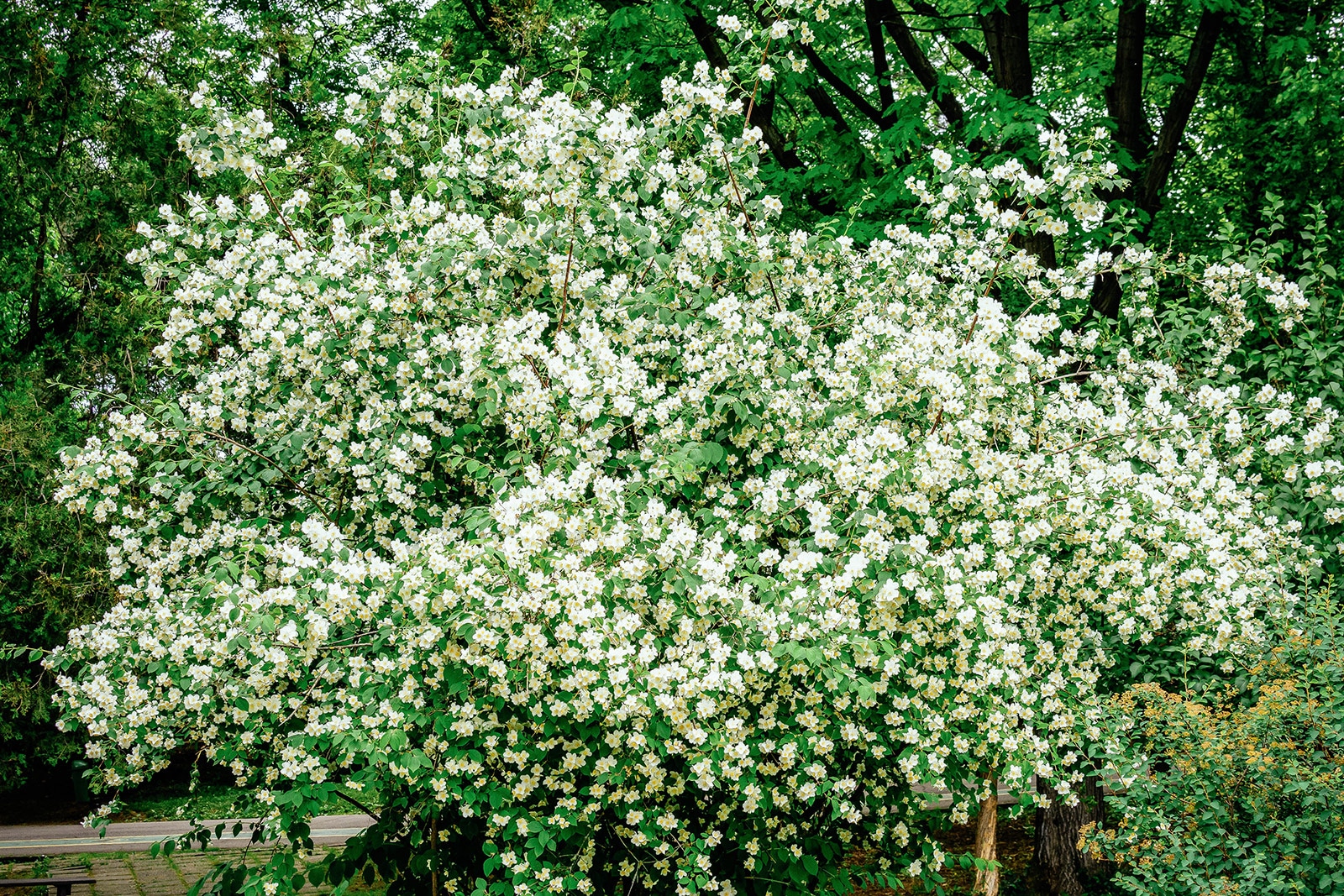
I’ve always lamented the fact that I can’t grow citrus trees in Central Oregon (outside of a greenhouse, anyway) because I truly miss the unbelievable fragrance of citrus blossoms in spring. Well, now I can have them again!
If you love the sweet scent of orange, you’ll want to plant a sweet mock orange (Philadelphus x virginalis) by every window and backyard lounging area, where the shrub will explode in late spring to early summer with deliciously fragrant flowers.
So yes, this is actually a shrub rather than a tree, but it grows up to 10 feet tall, making it more similar to a small tree in my view. It has a thick, upright growth habit and arching branches that fall in a semi-weeping form, and it’s easy to care for, being resistant to pests, diseases, and drought.
- Hardiness zone: 4 to 8
- Sun exposure: Full to partial sun
- Growth per year: Up to 2 feet
- Mature height: 8 to 10 feet
- Shop sweet mock orange trees
Best fast-growing tree for bark
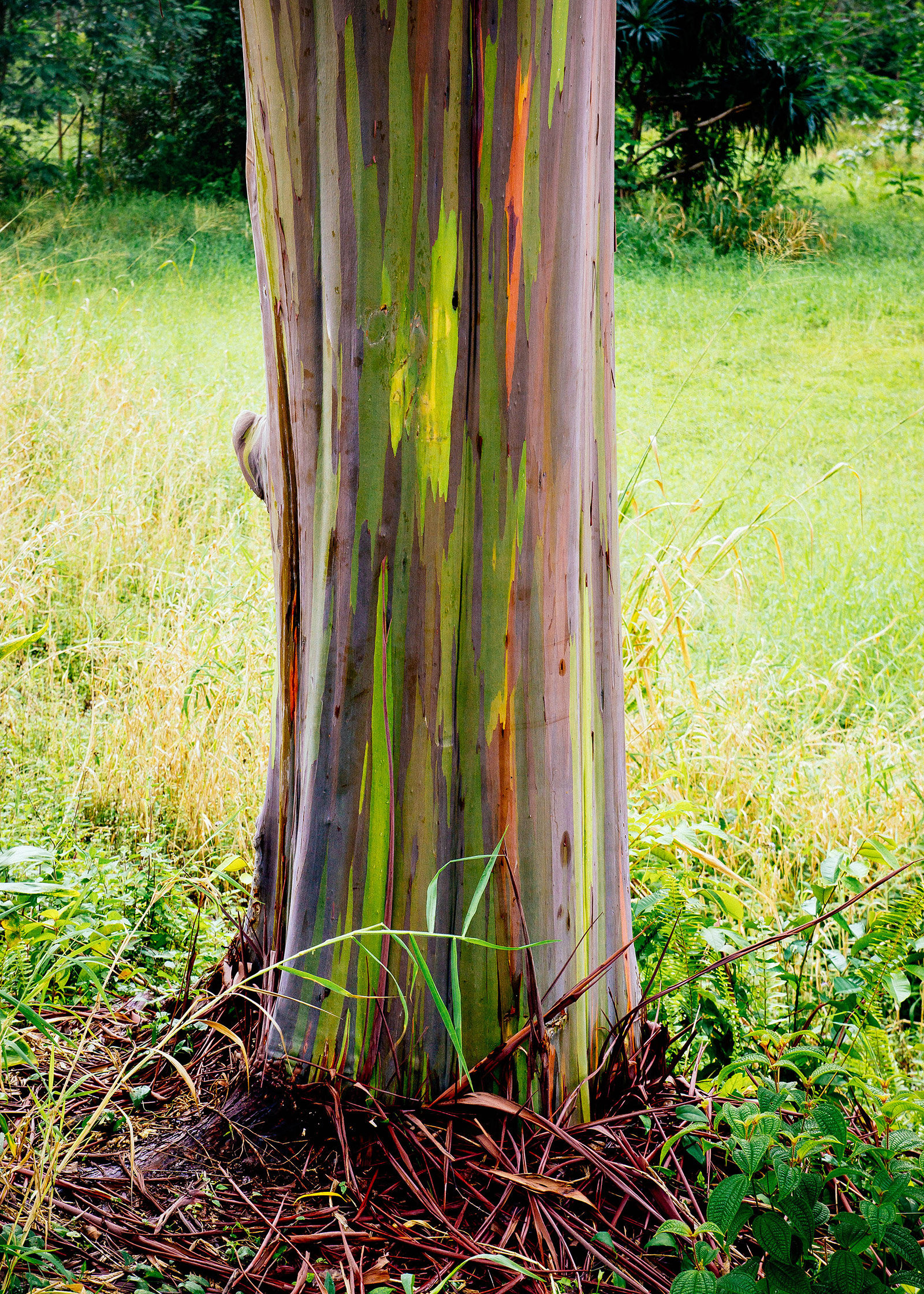
Rainbow eucalyptus (Eucalyptus deglupta) is one of the most beautiful trees in the world with its second-to-none bark texture and color. As the tree grows, the brown outer bark delicately peels back to reveal the vibrant inner bark. First the palette starts out as pastel green, then it deepens into orange, red, pastel blue, and coral pink. These multicolored streaks of peeling bark run the entire height of the trunk, almost like a painting!
Don’t be turned off by its massive mature height, however. Smaller backyards can keep rainbow eucalyptus at a more manageable size with regular pruning—this species does equally well as a 20-foot tree or a 60-foot tree. It’s also drought-tolerant once established.
- Hardiness zone: 9 to 11
- Sun exposure: Full sun
- Growth per year: 2 to 3 feet
- Mature height: 60 to 80 feet
- Shop rainbow eucalyptus trees
Best fast-growing tree for year-round interest
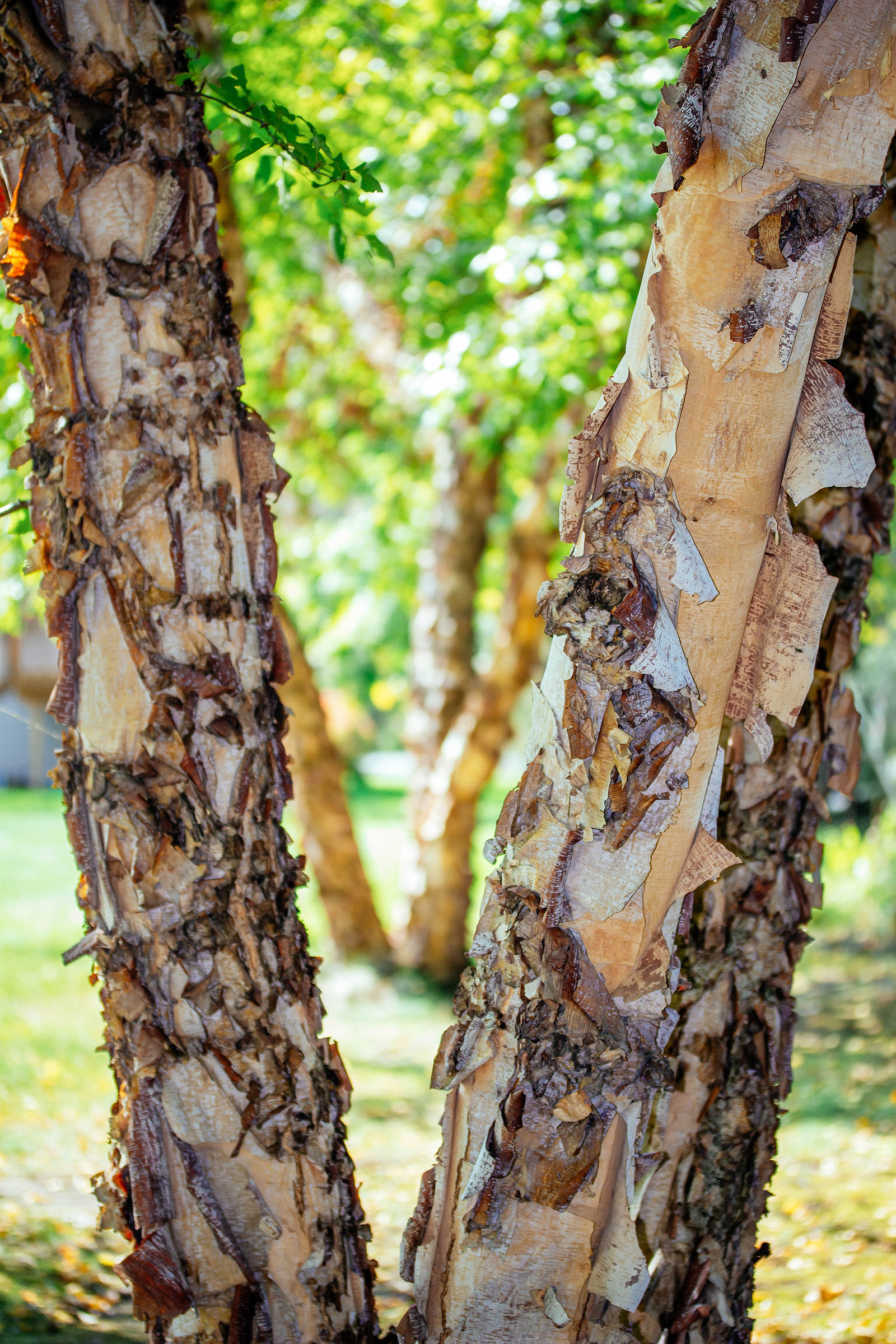
If you want a tree with a bit more character year-round—but isn’t always green—consider this river birch tree (Betula nigra ‘Cully’). Birch trees are known for their unique peeling bark, which steal the show in winter once the leaves are gone. Come spring and summer, river birches grow delicate green canopies that provide dappled shade. The leaves then take on butterscotch tones in fall before dropping to create a golden carpet.
This species is a good choice that resists deer in the yard, and it also adapts to a wide range of climates and growing conditions, from wet to dry planting areas, modest drought to mild floods, and even strong winds, ice, and other damaging elements. Whatever you throw at it, chances are, a river birch tree can handle it.
- Hardiness zone: 4 to 9
- Sun exposure: Full to partial sun
- Growth per year: 2 to 3 feet
- Mature height: 40 to 50 feet
- Shop river birch trees
Best fast-growing small tree
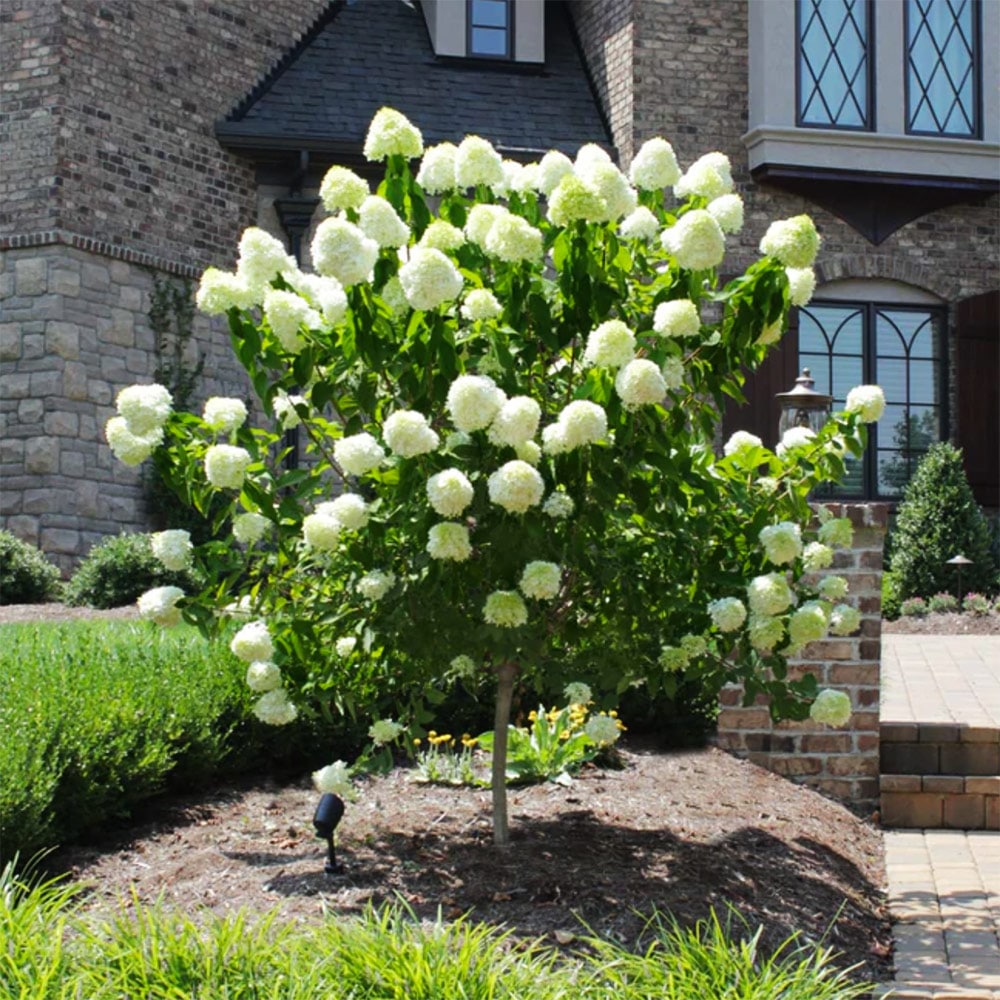
I simply can’t get enough of these Limelight hydrangea trees (Hydrangea paniculata ‘Limelight’ PP12874) because they look like bouquets on a stick! The huge, puffy flowers emerge in soft pastel shades of pink, green and blue in spring, then give way to creamy white blooms later in the season. You get flowers all summer long, giving you countless cut flowers to put in a vase every week, or to dry and preserve for fall and winter arrangements.
Topping out at 8 feet, Limelight hydrangeas are the ideal small tree for beauty and color. Despite how delicate they look, the trees are surprisingly hardly—down to zone 3 (around -30°F) with drought tolerance and good resistance to most pests and diseases. Plant a Limelight hydrangea tree front and center in your yard so you can admire its showstopping display all season!
- Hardiness zone: 3 to 8
- Sun exposure: Partial shade to partial sun in zones 7 to 8, full sun in zones 4 to 6
- Growth per year: 1 to 2 feet
- Mature height: 6 to 8 feet
- Shop Limelight hydrangea trees
Best fast-growing tree for large yards
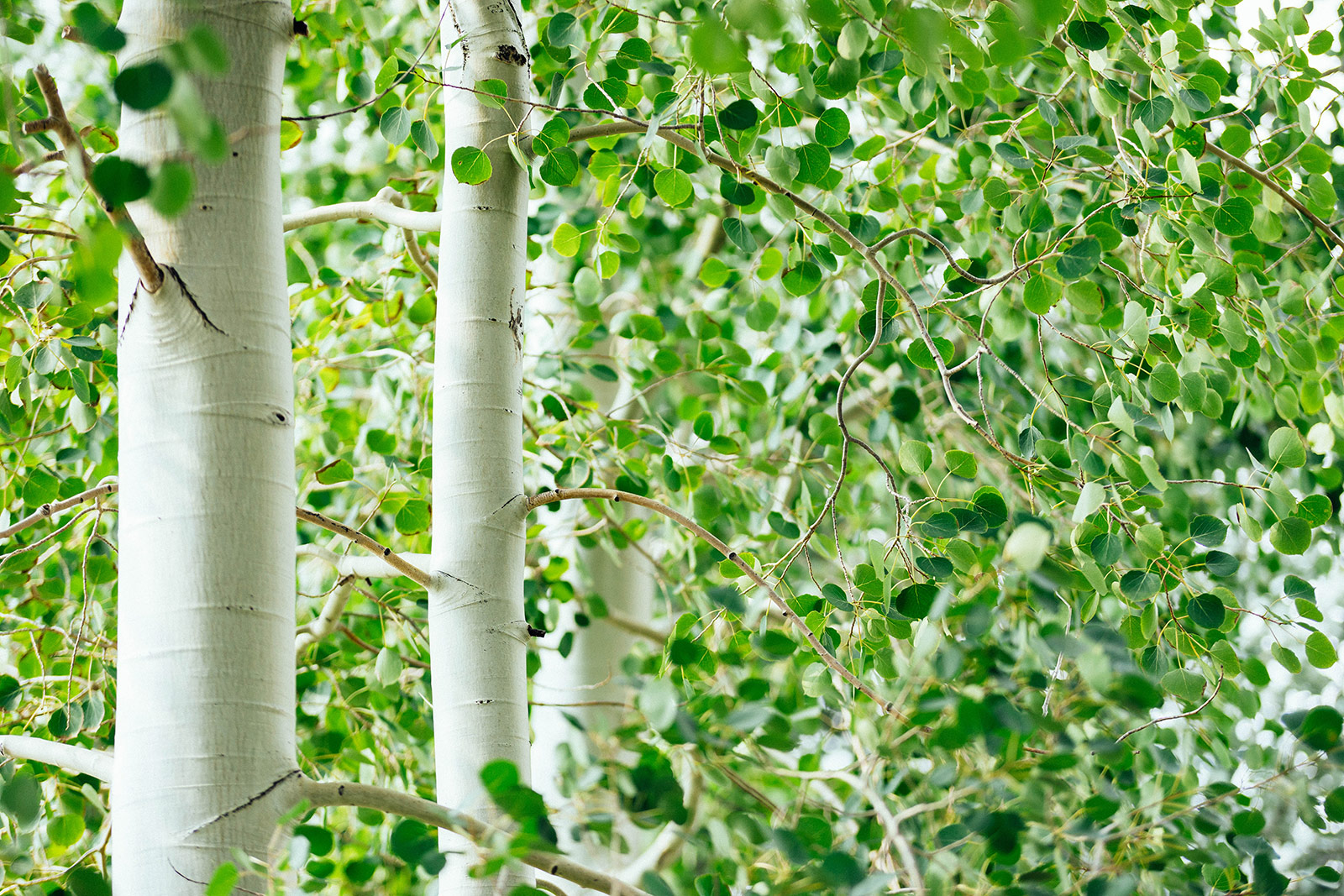
I almost hesitate to include this tree on the list, but I have a grove of quaking aspens (Populus tremuloides) in my yard that I absolutely love—despite them being somewhat loathed in suburban neighborhoods for their invasiveness.
But this invasiveness is what makes quaking aspens the best trees to plant if you want to grow a lush landscape quickly. The key is to plant them on a large property (at least an acre or two) where their roots have room to sprawl… and sprawl they will! Quaking aspens send up suckers quickly and easily (oftentimes several feet away from the mother tree), which is helpful if you don’t have the budget to buy a lot of trees for privacy screening.
The small, heart-shaped leaves turn yellow in fall, making for a beautiful contrast against the white bark. When a light breeze passes through the tree, the leaves quake (tremble) and create the most soothing sounds. (I hang a hammock between my own aspen trees.) Highly recommended if you have the wide open space for these beautiful trees!
Another important thing to note: Aspens have higher moisture content and fewer to none of the volatile chemical compounds that make conifers (like pine trees) so flammable. That means they’re an excellent choice to plant as a natural fire break if you live in a wildfire-prone area.
- Hardiness zone: 2 to 7
- Sun exposure: Full sun
- Growth per year: Up to 5 feet
- Mature height: 40 to 50 feet
- Shop quaking aspen trees
Best fast-growing fruit tree

Elberta peach (Prunus persica ‘Early Elberta) is one of the world’s most prized peach trees, and for many reasons: It’s a fast grower at a rate of 2 to 3 feet per year, it produces some of the sweetest fruit available, (oftentimes the first season it’s planted), and it’s the most disease-resistant peach tree you can find. Elberta peaches are even pest-resistant, which means you can grow them easily and organically.
The large peaches are great for canning, baking, and snacking, and to make sure you get an abundant harvest, plant at least two trees so they can pollinate each other (though Elberta peach is self-fertile and will bear fruit with only one tree—you’ll just have better production if the trees are planted in pairs).
- Hardiness zone: 5 to 8
- Sun exposure: Full sun
- Growth per year: 2 to 3 feet
- Mature height: 15 feet
- Shop Elberta peach trees
Best fast-growing flowering tree

Despite its name, the Cleveland pear tree (Pyrus calleryana ‘Cleveland Select’) produces no fruit. However, it’s one of the first ornamental flowering trees to begin blooming in spring and grows so quickly that you can enjoy their cloud-like profusion of white flowers soon after planting. In fall, the foliage turns a striking orange-red before dropping to reveal a perfectly uniform tree.
Cleveland pear trees naturally grow in a clean, tight, symmetrical shape that makes pruning unnecessary. They also resist damage from extreme snow, wind, and ice, so people in cold climates don’t have to worry so much about adverse weather. (Note that this tree is only hardy down to zone 5, which is about -10°F.)
But, a caveat: Some people think the flowers have a pungent smell. Others don’t notice it so much. I’m not sure if this is due to local growing conditions or variances between ‘Cleveland Select’ trees from different growers, but it’s something to be aware of!
- Hardiness zone: 5 to 8
- Sun exposure: Full sun
- Growth per year: 3 to 5 feet
- Mature height: 30 to 40 feet
- Shop Cleveland pear trees
Best fast-growing windbreak tree

The Deodar cedar (Cedrus deodara) is an attractive evergreen that’s popular as a landscaping and privacy tree, since it reaches impressive heights (up to 70 feet) and widths (up to 40 feet). Fortunately, it’s a moderate grower (averaging 1 to 2 feet per year), so it won’t take over your garden. It has a graceful pyramidal shape, silvery green color, and long, whorled needles that give the tree a softer look.
You can plant Deodar cedars in a cluster of three to five trees to create a focal point in the yard, or group even more of them together in a row to make an effective windbreak. These trees live a long time and require little care once planted, so they’ll add form and function to your landscape for generations. (There’s also a more compact shrubby version of Deodar cedar that grows just 5 to 12 feet tall.)
- Hardiness zone: 7 to 9
- Sun exposure: Full sun
- Growth per year: 1 to 2 feet
- Mature height: Up to 70 feet
- Shop Deodar cedar trees
Best fast-growing pine tree

When it comes to the best fast-growing pine tree, I have to name what’s also the nation’s toughest tree: Austrian pine (Pinus nigra). This is the tree to plant if you’re convinced you have a black thumb, as it’s drought tolerant, incredibly wind-resistant, adapts to a range of poor soils from sandy to clay, and has a high salt tolerance (making it a good choice to grow near the coast or in northern regions where salt is commonly used on the roads in winter).
Austrian pines grow tall and wide into a lush, solid wall of lush green needles, which means they’re perfect for blocking your neighbors.
And here’s a fun fact: Austrian pines were planted during the dust bowl because they were one of the only trees that could handle the arid conditions and nutrient-depleted soil. So if they can survive that, they surely can thrive in your yard.
- Hardiness zone: 4 to 8
- Sun exposure: Full sun
- Growth per year: 1 to 2 feet
- Mature height: 40 to 60 feet
- Shop Austrian pine trees
Best fast-growing conifer tree

If you want a gorgeous evergreen tree that can thrive in cold regions where other varieties won’t grow, as well as tolerate heat in warmer climates, Canadian hemlock (Tsuga canadensis) should be on your list. This graceful conifer has wispy foliage on thick, flowy branches, and it’s a moderate grower, averaging 1 to 2 feet per year.
But what it lacks in speed, it makes up for in its versatility: The Canadian hemlock can grow in poor soil conditions and even partial shade, especially in climates with hot summers. This is the type of tree you want in your front yard as a privacy screen and windbreak, as it’s highly attractive and easy to care for.
- Hardiness zone: 3 to 7
- Sun exposure: Full to partial sun
- Growth per year: 1 to 2 feet
- Mature height: 35 to 45 feet
- Shop Canadian hemlock trees
Best fast-growing oak tree
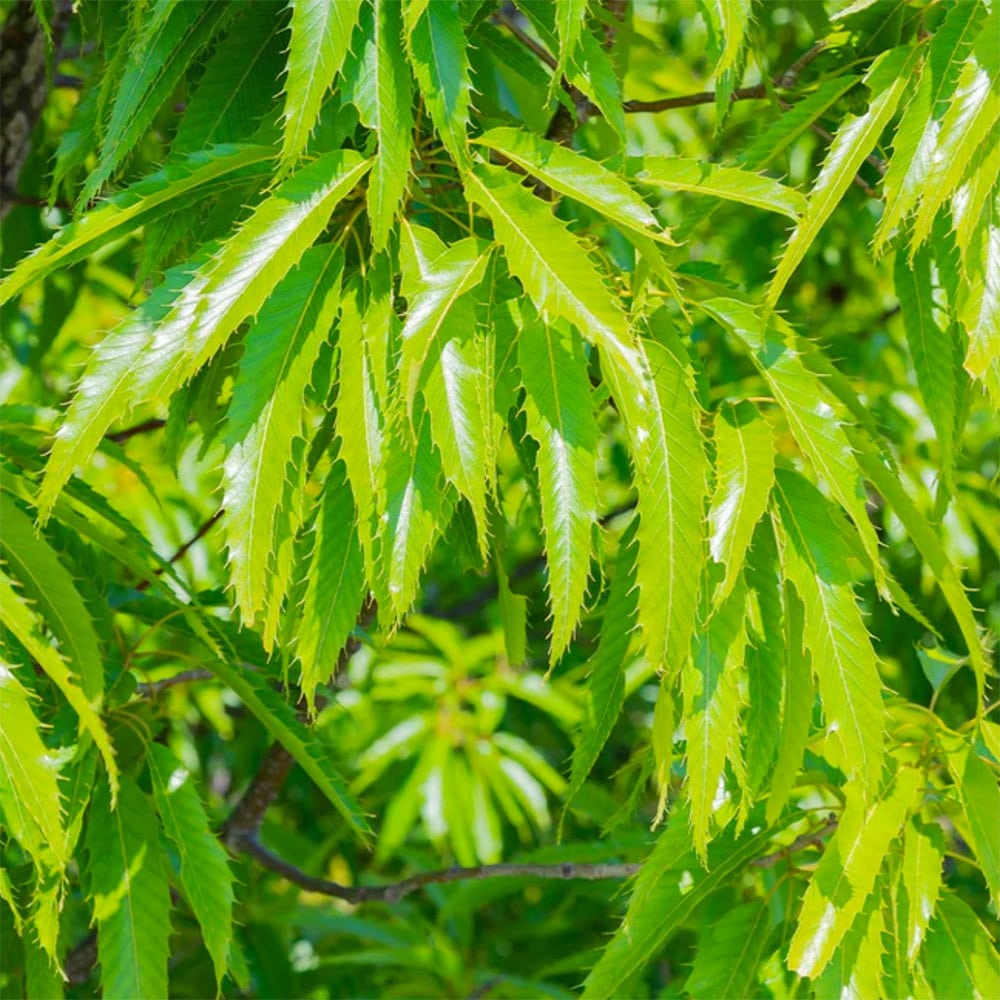
The sawtooth oak (Quercus acutissima) is a mighty oak with mighty growth, as it can fill in your landscape with its majestic presence and cooling canopy without you having to wait 50 years! This regal tree is an Asian oak that has been grown in the United States since the mid 1800s, and it easily grows 1 to 3 feet per year with a wide, spreading habit. New leaves emerge a bright yellowish green, darken to a lustrous clover green in summer, and transition to gold, orange, and russet shades in fall.
What I love most abut sawtooth oaks (besides being low-maintenance trees that are largely untroubled by diseases) is their distinctive foliage: the leaves are narrow with jagged sawtooth edges, inspiring the tree’s common name.
- Hardiness zone: 5 to 9
- Sun exposure: Full to partial sun
- Growth per year: 1 to 3 feet
- Mature height: 40 to 60 feet
- Shop sawtooth oak trees
Best fast-growing maple tree
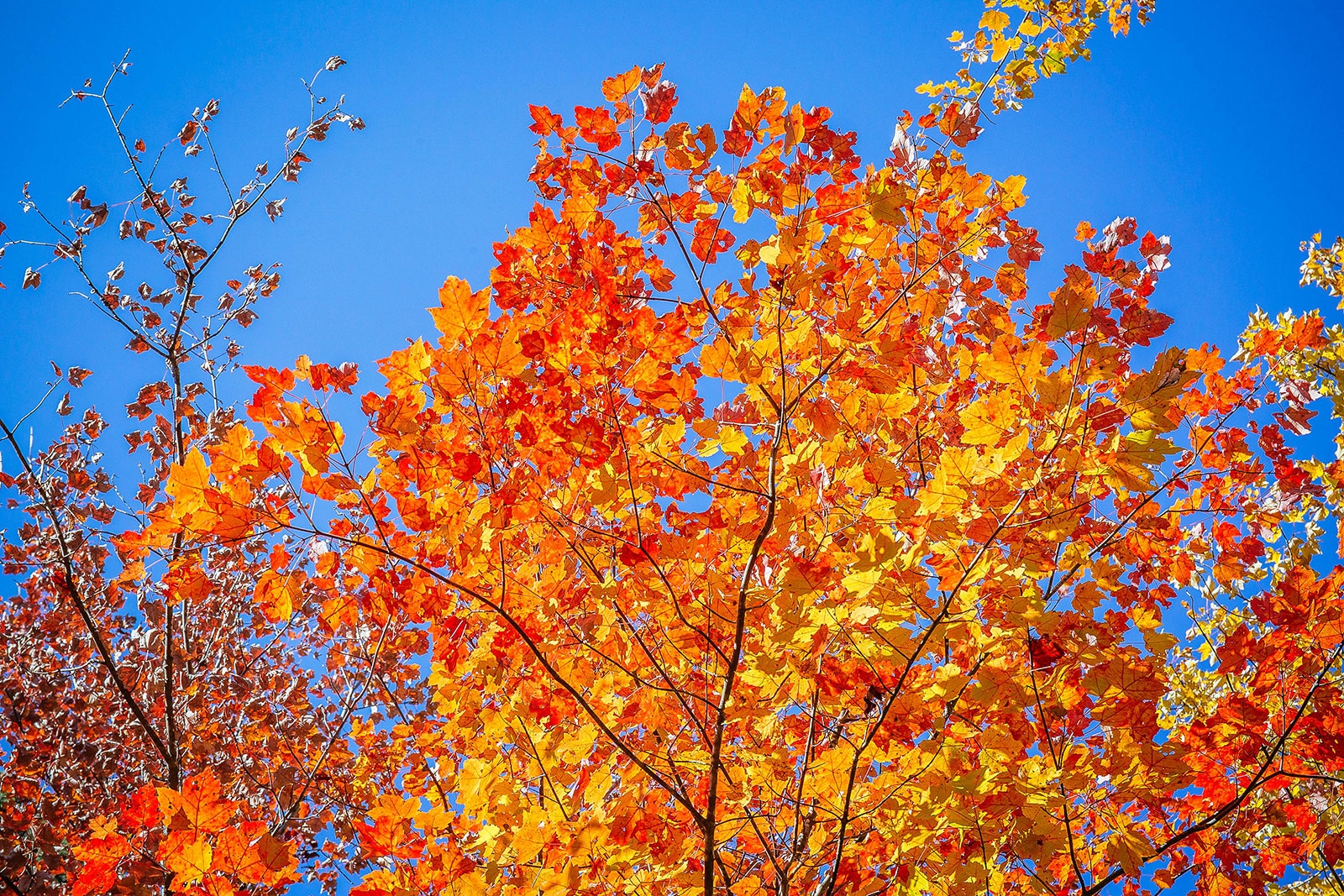
The sugar maple (Acer saccharum) is one of America’s most-loved trees, and that’s not merely a marketing claim—more states have claimed it as their state tree than any other single species.
There’s a reason why New York, West Virginia, Wisconsin, and Vermont adopted the sugar maple as their state tree, and Canada adorned its national flag with the sugar maple’s vibrant leaf: It’s a stand-out in all seasons, but especially in fall, when the leaves morph into a vivid palette of bright yellows, rich golds, vivid orange, and finally deep reds.
As mentioned above for the Autumn Blaze red maple, be careful growing sugar maples if you have horses, as the wilted and dried leaves are known to be toxic to them if ingested.
Otherwise, if you want a charming tree with immense curb appeal that’ll be the talk of the neighborhood, plant a sugar maple near the road and enjoy the kaleidoscope of sunset tones every year!
- Hardiness zone: 3 to 8
- Sun exposure: Full to partial sun
- Growth per year: 1 to 2 feet
- Mature height: 55 to 75 feet
- Shop sugar maple trees
Best fast-growing poplar tree
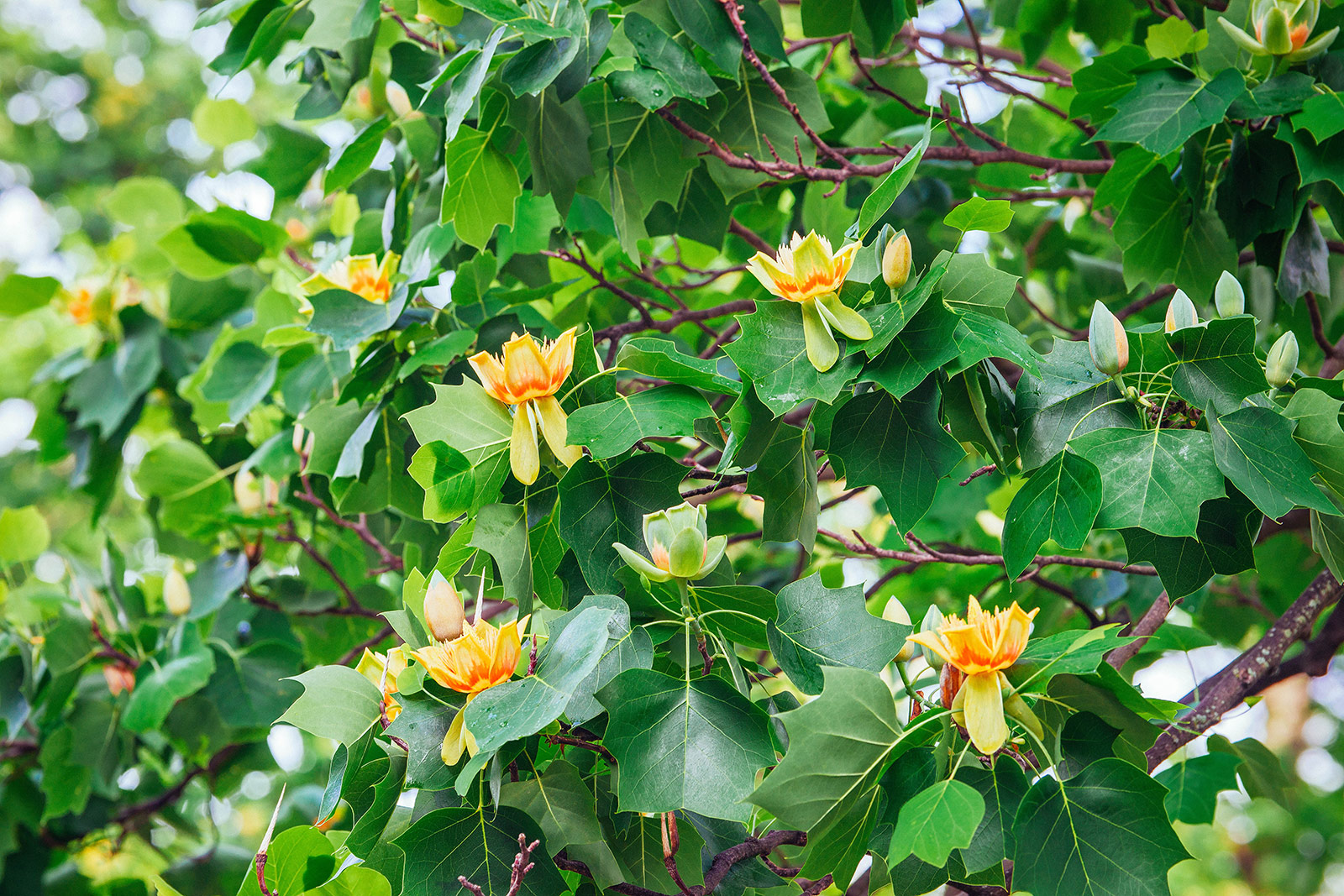
Do you like the lush shade canopy and distinctive leaf shapes of poplar trees? Then you’ll love the tulip poplar (Liriodendron tulipifera), which is so-named because of the dazzling yellow tulip-like blooms that cover the tree in spring. (You’ll have to be patient though; tulip poplars grow fast if we’re talking about height, but typically take 10 to 15 years to develop blooms.)
Once the flowers fade in summer, you get a well-formed shade tree that’s green until fall, when the leaves turn to bright yellow for their last show of the year.
Tulip poplars are highly resistant to pests and diseases and thrive in nearly any area. Deer tend to stay away from the foliage, so these trees are a great choice for front yards and other areas without fencing or protection.
- Hardiness zone: 4 to 9
- Sun exposure: Full sun
- Growth per year: More than 2 feet
- Mature height: Up to 70 feet
- Shop tulip poplar trees
Best fast-growing palm tree
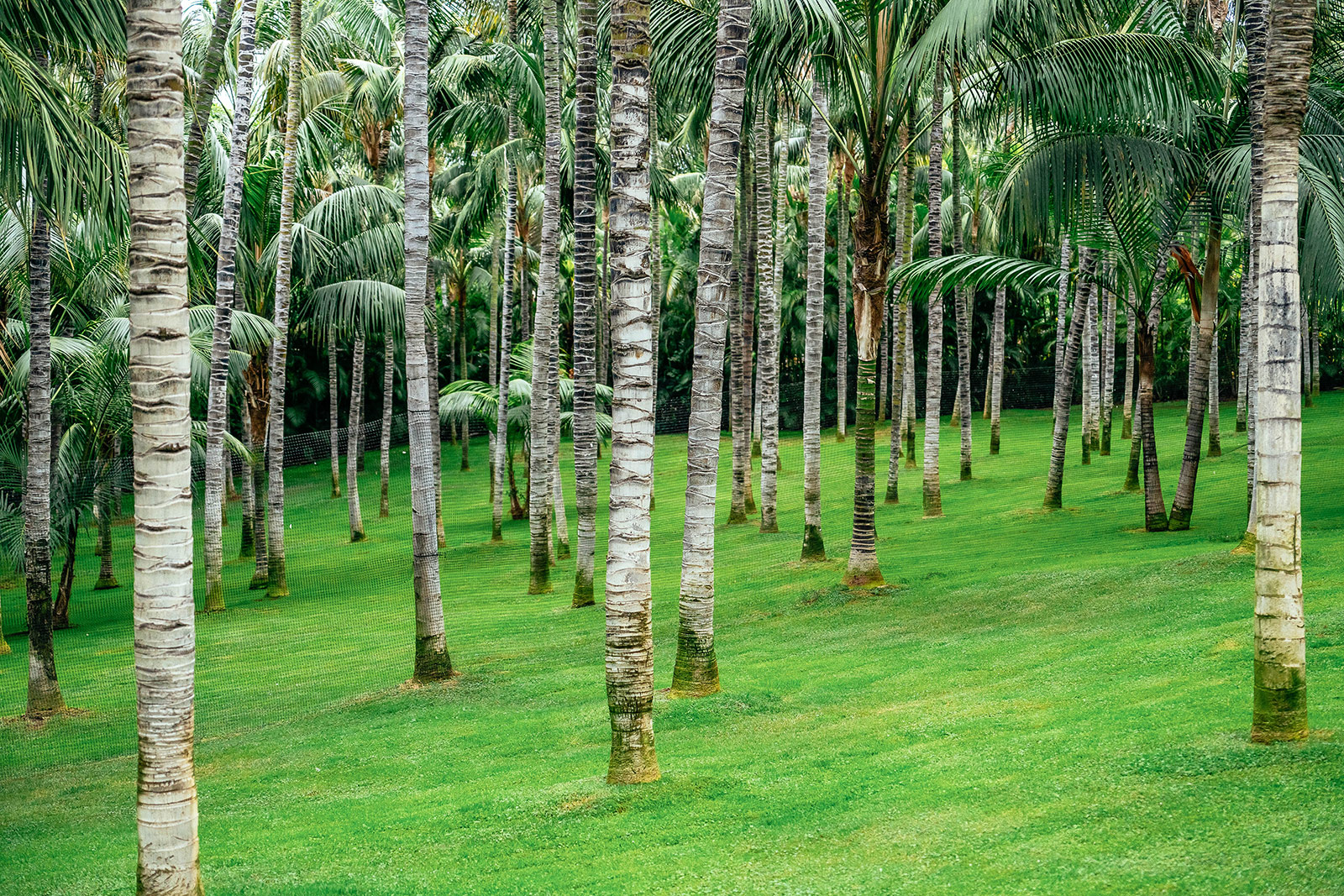
Need some palm trees to fill your landscape fast? Consider the Mexican fan palm (Washingtonia robusta), a carefree desert tree that can add lush tropical vibes to your yard at the rate of 3 feet per year. These are the same sky-high trees that dot the Los Angeles skyline.
Also known as Washington palms, the trees have upright branches with leaves that fan out on the ends. The dramatic spiky silhouette helps keep deer away, as they hate sharp, pointy things on their tongue.
Best of all? Mexican fan palms are very drought-tolerant—all you have to do it plant and let sunshine and rainfall take care of the rest. You’ll have your own oasis in no time.
- Hardiness zone: 9 to 11
- Sun exposure: Full sun
- Growth per year: Up to 3 feet
- Mature height: 70 to 100 feet
- Shop Mexican fan palm trees
Are there other fast-growing trees I should know about? Leave your comment below so I can add them to my wish lists!


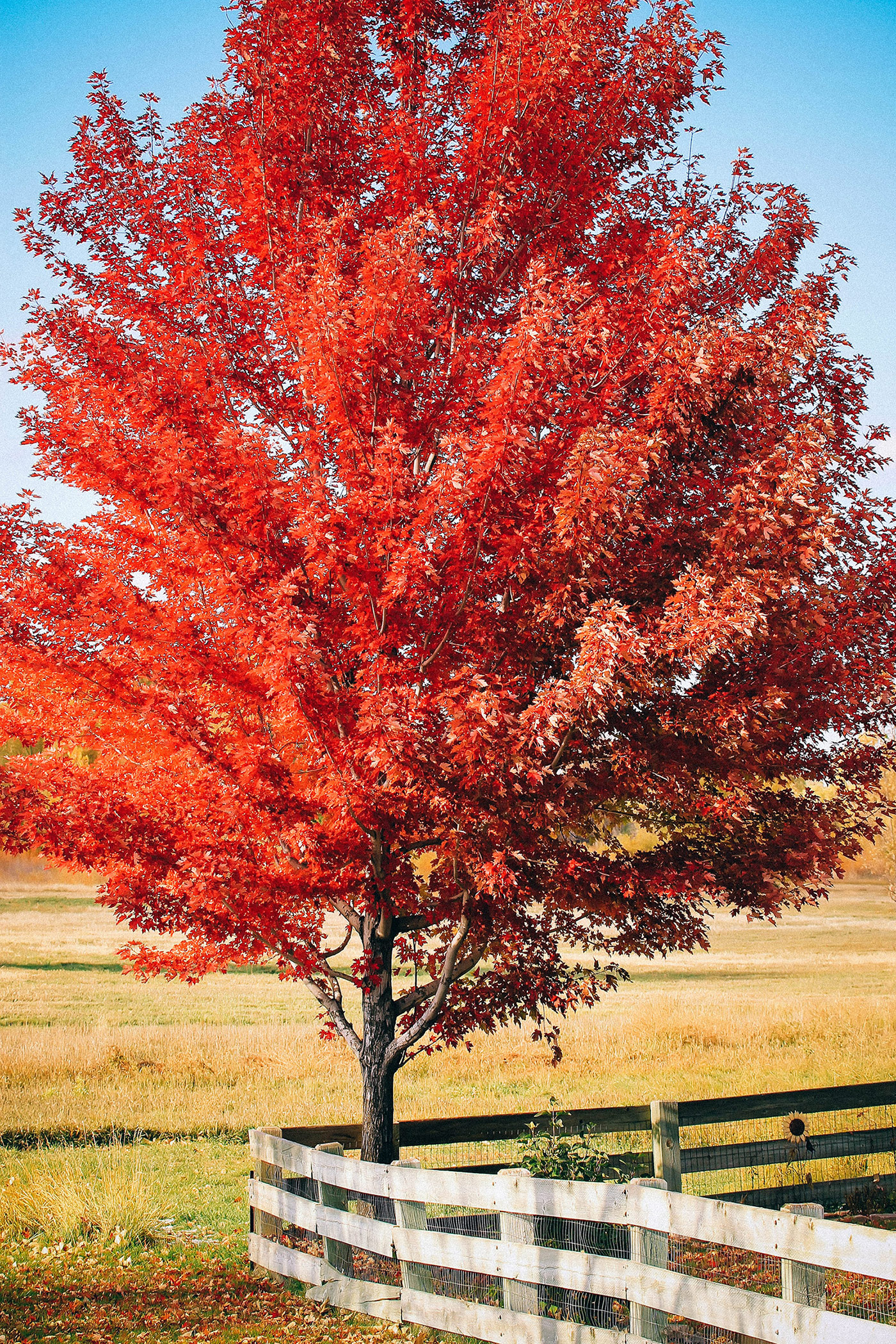













This is an awesome list, thank you! Just a word of caution on the Leyland Cypress, it will shed profuse amounts of pollen 6-7 months of the year and tends to cause severe reactions in people (or pets) who have allergies or asthma. It is considered one of the worst possible choices for anyone who is concerned about allergies as it is a common allergen.
Dear Linda, I always love reading your posts. They are SO informative. I appreciate the time you take to gather as much information as possible and present it in such an easy format. Thank you for making the world of plants easier and less intimidating. I am a Master Gardener In Oregon, Washington and California and I find it quite overwhelming at times. There’s always so much more to learn. You do an amazing job for anyone at any level. Thank you!!!